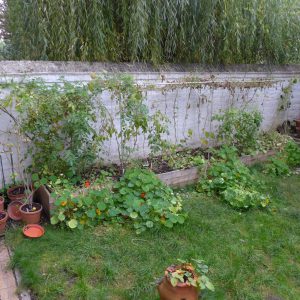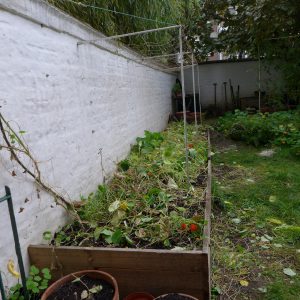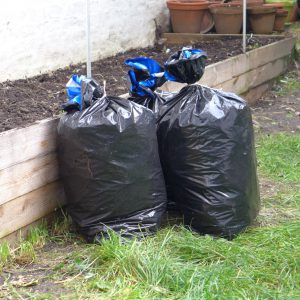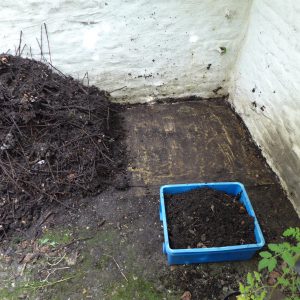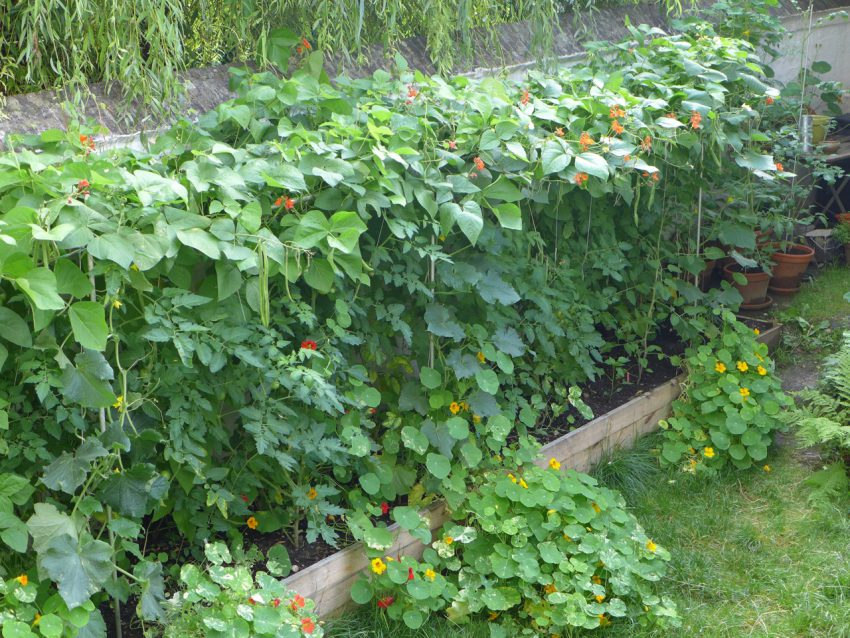
A raised soil bed is without doubt the most useful form of growing area for a small city garden. There are many ways to run a raised bed, some all year round, but whichever growing plan is used it is important to think to the soil and how to keep it healthy and alive.
For a small city garden with limited exposure and damp conditions (and lots of slugs) it is worth clearing the bed at the end of each summer season to feed the soil with fresh compost and let it rest over the winter. All of the green material from the plants is cut down and chopped up.
As this year was a very productive year there is excess green material to be composted. By simply bagging the material for a few weeks it can be temporarily stored until the compost bin is turned over and this material can be added. Only diseased plant material is discarded but as this year there was very little everything from the garden will be composted.
Using home made compost is the key to successful raised bed gardening. Each autumn as the bed is cleared mature compost is forked into the top 6 inches of the bed. This will be repeated later in the winter and again in the spring. In this way the composting process continues from the compost bin into the raised bed each year.
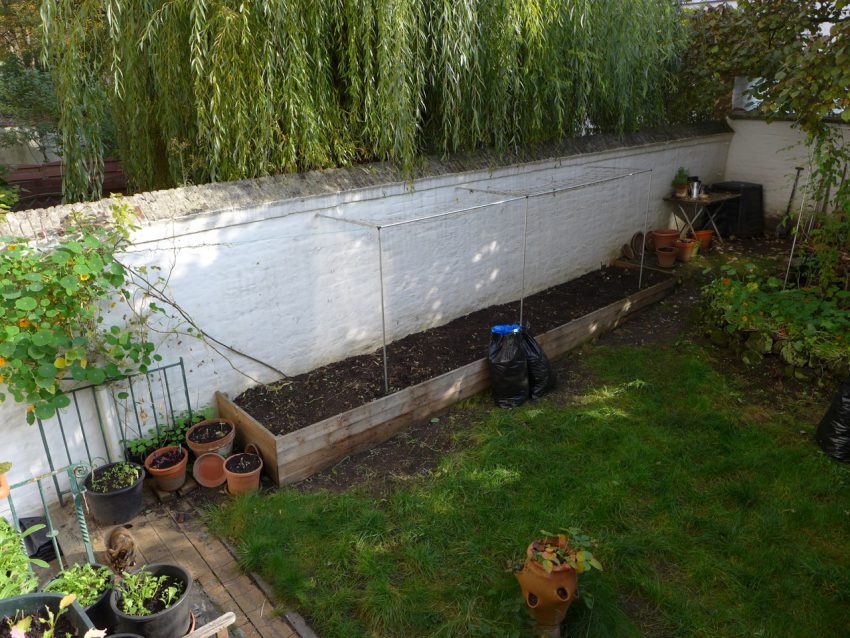
It is possible to plant a winter crop in the raised bed but as this bed is aimed at a highly productive summer crop feeding the bed and resting it over the winter ensures good soil fertility. As slugs and snails are a big problem this year forking over the soil during the winter, especially if there is a frost, is well worth the effort.
